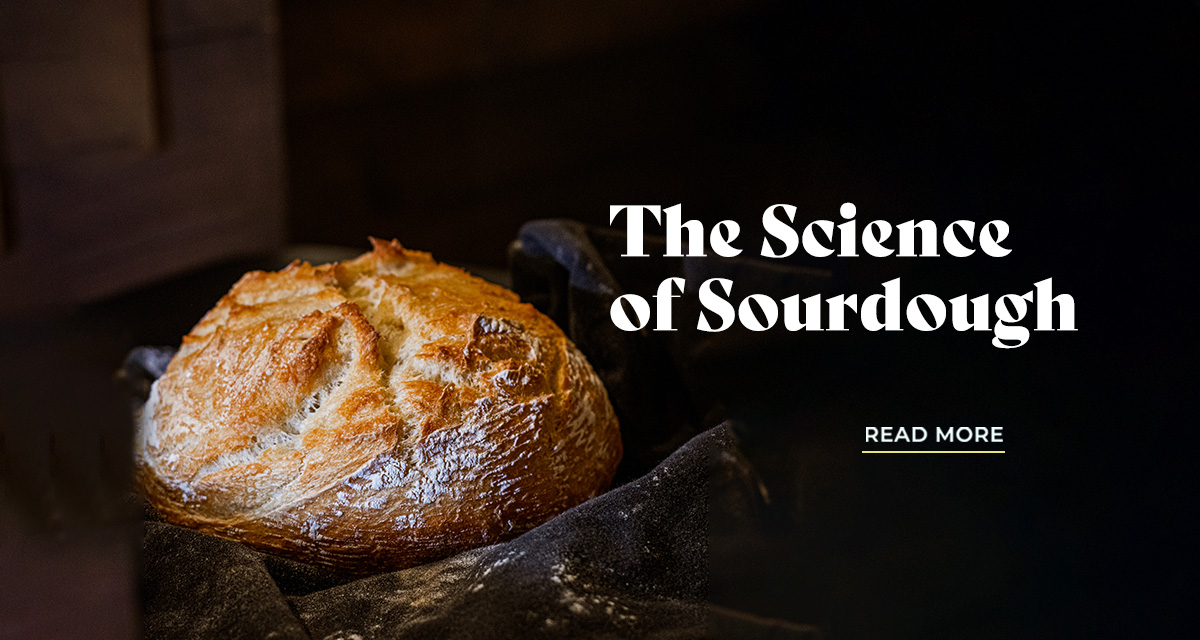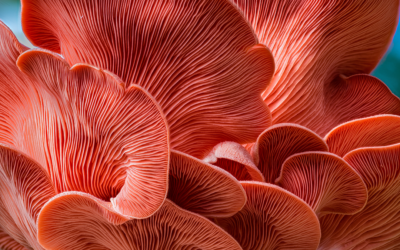– Photos by Jordan Secher –
When Krystal Schmidt first braved the world of sourdough bread baking, joining legions of home bakers during the COVID-19 pandemic, she was intimidated.
“Some of the recipes make you sweat,” she says. “It can take three days to prep, a lot of recipes are confusing, and you have to look up some of the terms.”
Those terms, like “wild yeast” and “lactic acid bacteria,” can rocket baking a loaf of bread out of the kitchen and straight into the science lab.
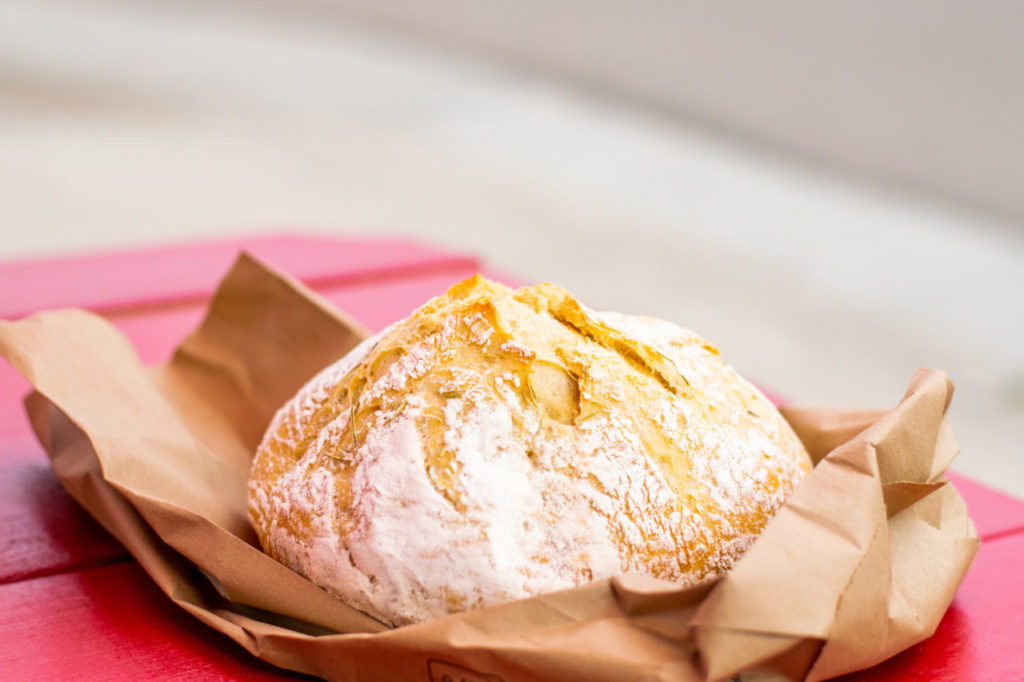
Rise Artisan Bread, Sourdough loaf
There aren’t many ingredients in sourdough—just salt, water and flour—but abundant methods and the many recipes bakers use to ferment grains to help sourdough rise can be overwhelming. There’s also something bakers call a “starter,” which must be fed weekly (or daily if you bake a lot) and probably makes them wonder if they’re baking bread or growing strange creatures.
Schmidt found success after discovering an online recipe that didn’t stress her out. It was more forgiving than others she’d attempted—like if you forgot to drop the oven temperature after taking the lid off the Dutch oven, the bread wasn’t a total fail.
She also learned that baking sourdough doesn’t require fancy equipment. “You can throw it in the bowl, cover it with a towel and it works. But you do need to get the ingredient weights correct—they’re measured in grams—so you should buy a digital scale from Amazon for $10,” she advises.
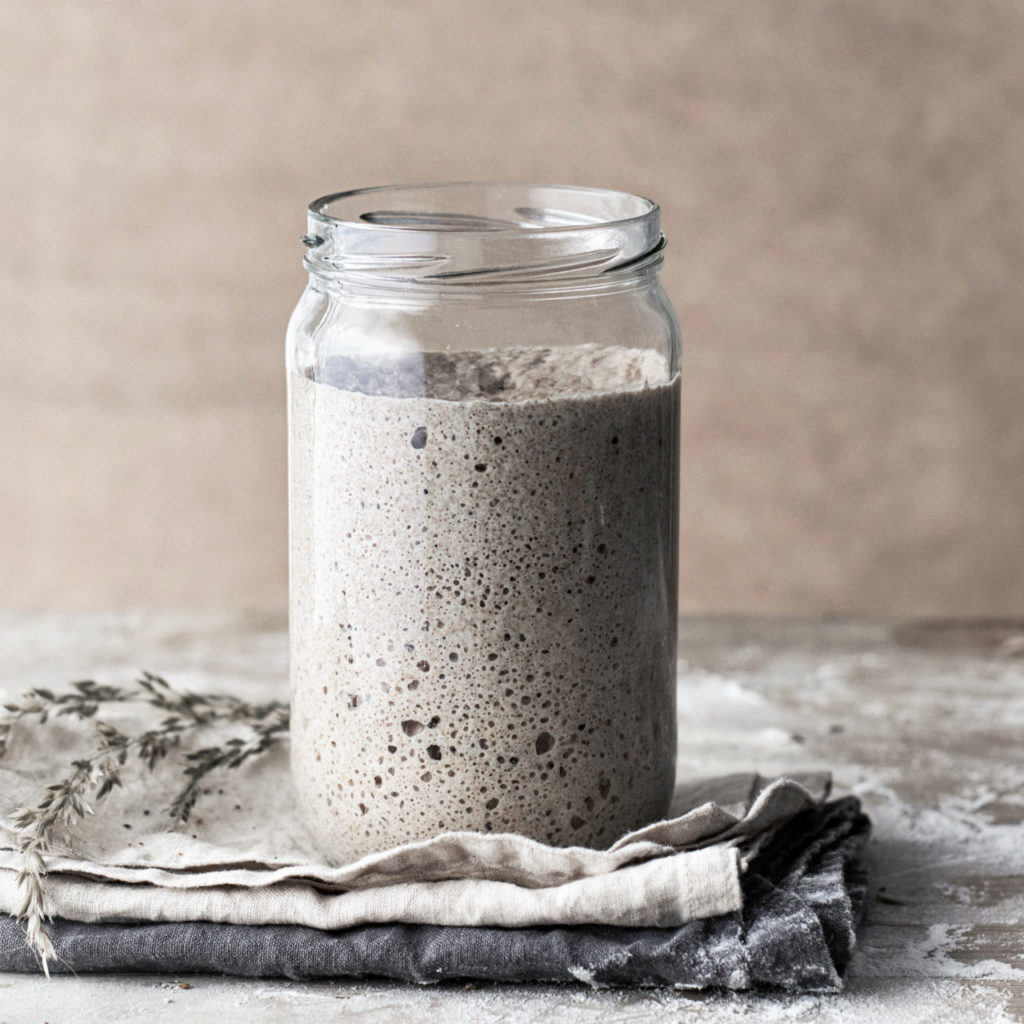
Homemade sourdough starter in a glass jar. Adobe Stock.
Get started with a starter
Annie DeCoteau of Rise Artisan Bread Bakery & Cafe in Berthoud says making a starter is easy. All you do is mix two parts flour to one part water in a jar or bowl until it’s the consistency of paint. Cover loosely, leaving a small gap or the lid slightly ajar.
Combined, those two ingredients will ferment and capture the wild yeasts that naturally exist in our surroundings. A small amount of the fermented culture is added to bread dough, which makes it rise. And since you’re capturing naturally existing yeast, sourdough bread doesn’t need commercial baker’s yeast.
“This is why sourdough from different areas tastes differently: the water and the wild yeast are distinct to that location,” DeCoteau says.
If the term “wild yeast” has you worried you’re the main character in a sci-fi movie (or you’re growing one), relax. Wild yeasts are single-celled organisms that live around us. They eat carbohydrates, some of which might be living on a bowl of fruit sitting on the kitchen counter. These microorganisms are also in the air, on your baking equipment and yes, as much as you might wash them, they’re on your hands, too.
As the yeasts consume the carbs, the organisms release carbon dioxide and alcohol, making them ideal for leavening, the technical term for getting bread to rise. The fermented starter also contains lactic acid bacteria, a probiotic microorganism found on decomposing plants and fruit and vegetable skins that gives the bread its distinctive sour taste.
To feed it, remove half the starter daily and add 1/2 cup flour and 1/4 cup water. The sourdough will be ready in two weeks. The microbial blend, if managed properly, has a naturally long shelf life. You’ll know it’s become activated when it doubles in size.
If you store a starter jar on the counter, you’ll need to remove some and feed it daily. The second option is to store in the refrigerator and feed it once a week to keep the yeast active.
“Most people have a starter jar and a discard jar, one they bake with and one for the excess. The discard can go dormant, but you can still use it to make pizza crust, crackers, crumpets or pancakes,” Schmidt says.
When Schmidt began baking, she wondered if it would be rude to ask a friend for their starter and learned that starters are often passed down for generations. DeCoteau says they can last forever; she uses one from 1929.
“Older starters have a deep flavor that cannot be replicated by a new starter. If you know someone that has a starter, ask them for some,” she says.
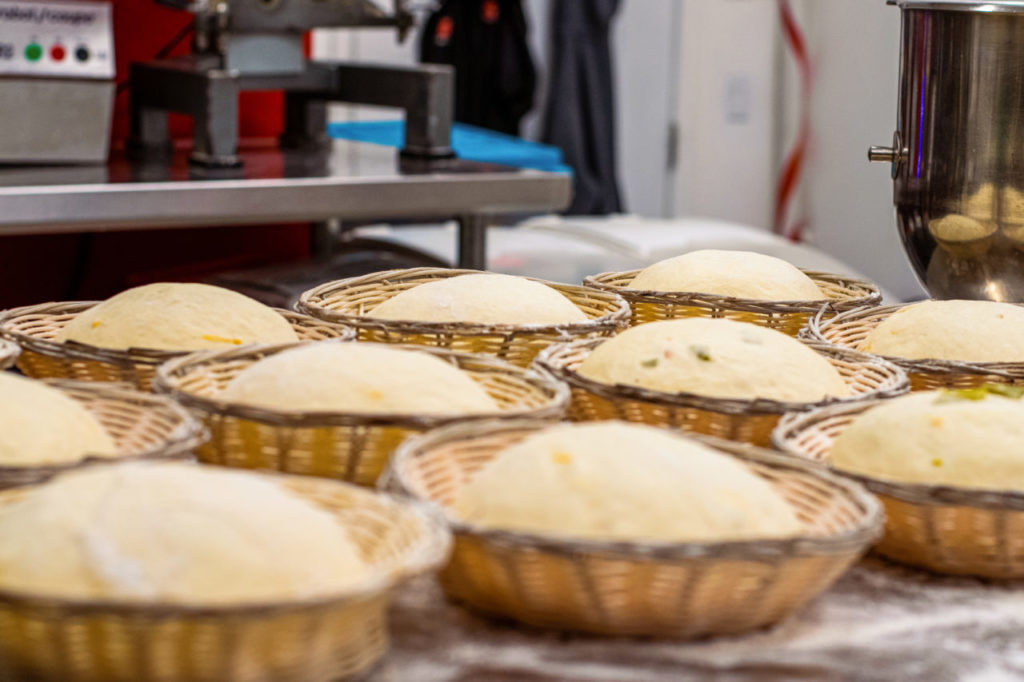
Sourdough loaves proofing at Rise.
Tools to bake sourdough
After you’ve got the starter, you’ll need a floured towel for covering the bowl while the dough is rising and a Dutch oven with a lid to bake it in. Make sure the towel isn’t fuzzy terrycloth; one made from flour sack or cotton cloth works best.
DeCoteau says you can buy proofing baskets and a lame (pronounced “Lahm,” French for “blade,”) or sharp knife for cutting hatch marks or designs on the top of the loaf. A spray bottle is useful for adding steam to your oven.
Both women prefer King Arthur flour, but ideally any unbleached, unbromated (no bromate) high protein bread flour will do. DeCoteau recommends using flour with a 12-15% protein content.
Health benefits of sourdough bread
Because sourdough bread is a fermented food, breaking down gluten in the process, it is more easily digestible for people with wheat sensitivities.
“The fermentation process can counteract adverse reactions to gluten because there’s less of it,” DeCoteau says. “Basically, the bread acts as a prebiotic, a fiber which feeds the good bacteria in your gut. We use a long rise process at RISE Artisan Bread, so the dough has extra fermentation, which helps improve the bioavailability of fiber and minerals.”
Because there’s less gluten, people with gluten intolerances tend to tolerate it better than bread made with baker’s yeast. DeCoteau says it’s possible, although difficult, to make a gluten-free starter, because gluten is the protein that gets flour to rise and binds the ingredients together, she notes.
In addition to making the bread easier to digest and supporting gut health, fermentation and the lactic acid bacteria in the dough have less effect on blood sugar and insulin levels than regular bread. Eating sourdough often prevents blood sugar levels from spiking.
Schmidt, a nurse, believes the bread’s simplicity plays a part in its healthier profile, too.
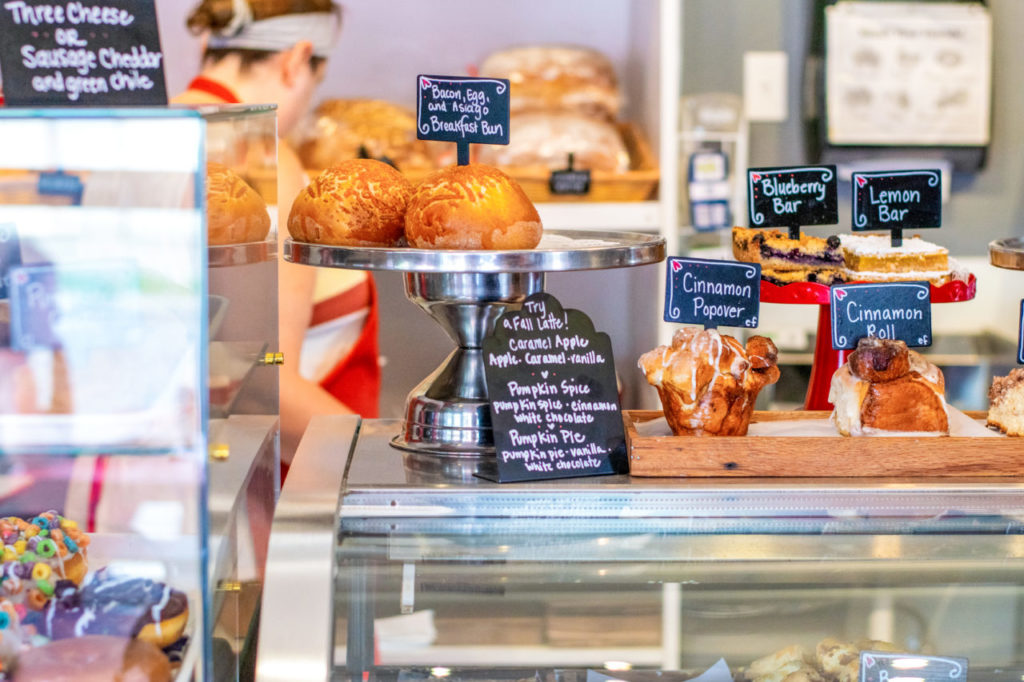
Rise Artisan Bread Bakery.
“It’s just three ingredients, and it doesn’t have all the additives that you can’t even pronounce that give it a longer shelf life,” she says. “If you can’t pronounce it, how does your body know what to do with it?”
Both agree that sourdough’s distinct tangy flavor and airy texture make it special. There’s also that chewy inside and crispy outside, thanks to what’s called “cloaking,” or what happens when steam in the hot oven warms the air and crisps the top of the bread loaf.
These days, Schmidt only bakes bread a couple times a month; her husband is on a keto diet and they’re not eating bread as often. But she continues baking sourdough so she can give it to friends.
“It’s a bread you share with someone you love,” she says. “That’s a good health benefit, too, the happiness and connection of sharing your food.”
___________________________________________________
Emily Kemme is an award-winning novelist and Colorado food writer.


